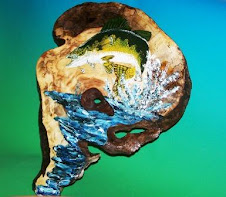 Merry Christmas and Happy New Year to all my outdoors friends. Thanks to all who are following this blog; your comments and suggestions will help me provide you with even better items throughout 2009.
Merry Christmas and Happy New Year to all my outdoors friends. Thanks to all who are following this blog; your comments and suggestions will help me provide you with even better items throughout 2009.All I can say is “man what a year”! It seems that any conservation initiatives have been steamrollered by the economy. Hopefully some of the federal infrastructure initiatives will include habitat restoration and outdoors recreational efforts.
With the election of an new, and hopefully forward thinking, President in the US and a Prime Minister in Canada the is starting to realize that he’s there to support the will of the people and not his own personal agenda, perhaps…just perhaps…environmental issues will make their way back onto the front page.
The technologies exist today to make a tremendous change in the way all North Americans interact with our environment. All that has been missing from the equation is political will. Our collective politicians have shown that they are able to make tough decisions where the economy is concerned; perhaps they will show just as much common sense where the environment is concerned.
Detailed study of wildlife is one of the most important barometers to gage the impact of climate change. This is not the place to cut funding, rather it is a place to increase funding and create jobs that will provide our elected officials with the hard data that’s necessary to make the tough decisions.
Well enough ranting for now…we can only hope.
If your planning a trip to Southern Ontario or if you live here and are looking for the best source for outdoors information be sure to check out www.sooutdoors.ca. Within the next month I will be adding a huge interactive database to the site that will allow visitors to quickly zoom in on a broad range of outdoors information. Read the blogs, check the calendars and join our outdoors forum. “We’ll get you So…Outdoors!”
“Peace on earth; good will toward men.”
SD







.jpg)



.jpg)